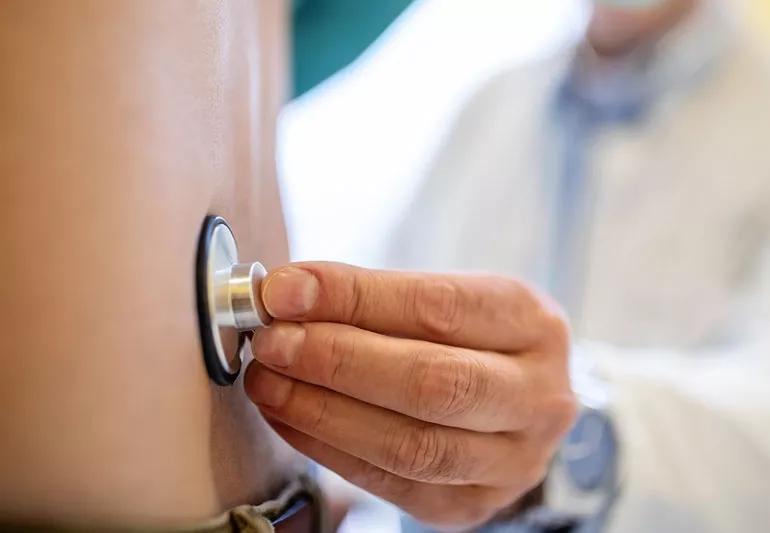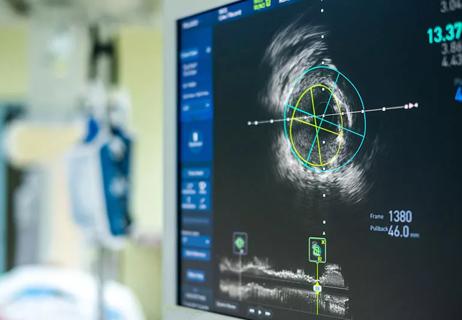This iconic medical tool has an enduring role

The stethoscope has been around for nearly 200 years and is still draped across every physician’s neck or tucked into lab coat pockets. No other medical device can boast a longer life or more useful purpose.
Advertisement
Cleveland Clinic is a non-profit academic medical center. Advertising on our site helps support our mission. We do not endorse non-Cleveland Clinic products or services. Policy
But you may wonder what doctors are actually listening for when they place that cool metal cone against your chest. Cardiologist Umesh Khot, MD, lets us “listen in” on what your heart has to say.
“The most important assessment is whether it’s normal,” he says. “If the heart sound is normal, meaning that there’s a regular beat without any murmurs, that’s a pretty good sign of heart health.”
1. Irregular rhythm: “Sometimes you hear an extra beat, sometimes it’s a skipped beat or it can be bouncing all over,” says Dr. Khot. “We can’t tell what the problem is that’s causing it, but we can get a sense of whether it’s in rhythm.”
2. Heart “murmurs:” A murmur itself isn’t the problem; the abnormal sounds — “whooshing” noises that vary widely — indicate a potential problem. “These signify blood flow problems within the heart, usually a problem with the valves,” Dr. Khot says. “The pitch and where it is in the heart can tell us what the valve problem is. We do additional testing to find out if it’s significant or not.”
3. Signs of congestive heart failure: These sounds are picked up by listening to the heart and lungs for both abnormal heart function and fluid in the lungs.
No matter what physicians hear through a stethoscope, it’s not enough to make a diagnosis. But such exams usually prompt further testing to uncover the cause of abnormal or irregular heartbeats.
Advertisement
Even the tried-and-true stethoscope is evolving with technology:
Despite these recent developments, the traditional stethoscope, without all the bells and whistles, is an enduring part of practicing medicine, says Dr. Khot.
“There’s a lot of evidence that the findings on this exam are powerful in diagnosing how sick a patient is,” he says. “Within five or 10 minutes, you can get a quick sense of whether the person is sick and in need of emergency therapy to save their life.”
Advertisement
Learn more about our editorial process.
Advertisement

Most recommended precautions center around minimizing bruising or swelling

Even one drink can have an impact on your cognitive function leading to slurred speech, blurred vision and impaired memory

Understand who may (and may not) benefit

Lorem ipsum dolor sit amet. Et odio Quis vel ipsam omnis eum alias deleniti et placeat impedit non voluptas galisum hic autem enim et cupiditate aliquid. Est beatae quidem non facilis autem ut commodi nisi aut tempore rerum et dolores voluptatem cum enim optio id sapiente quasi. Ad laboriosam officiis 33 cupiditate sequi ea voluptatum consectetur qui necessitatibus voluptate et quasi doloremque et facere explicabo quo explicabo officia

Seeking help through therapy can be an important step in improving your quality of life when you have UC

Type 2 diabetes isn’t inevitable with these dietary changes

Applying a hot or cold compress can help with pain